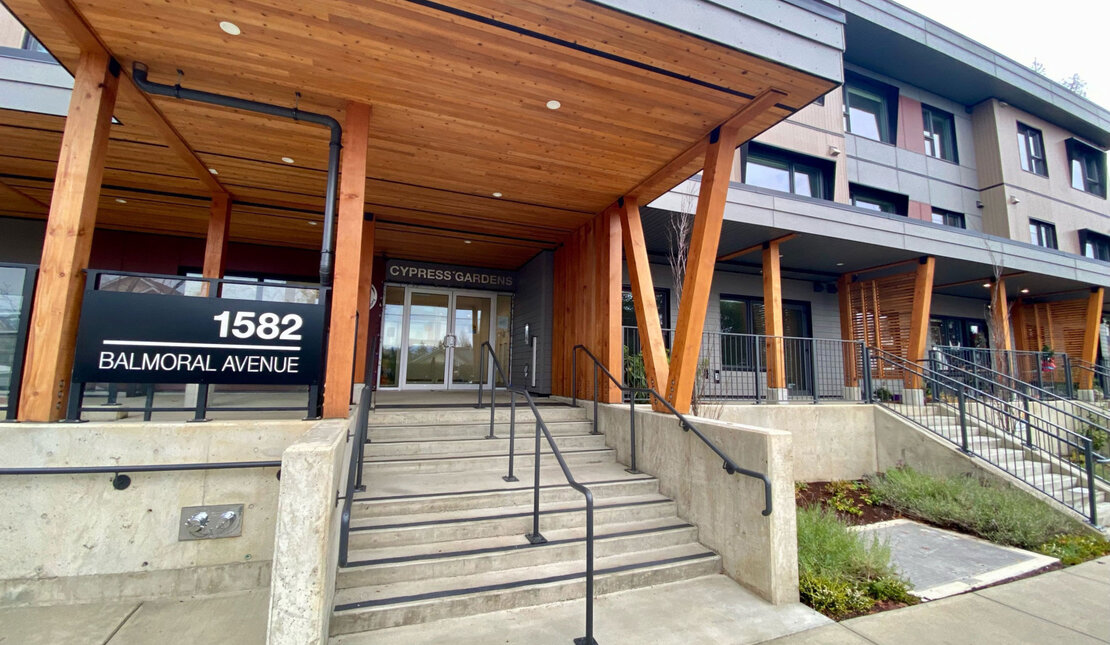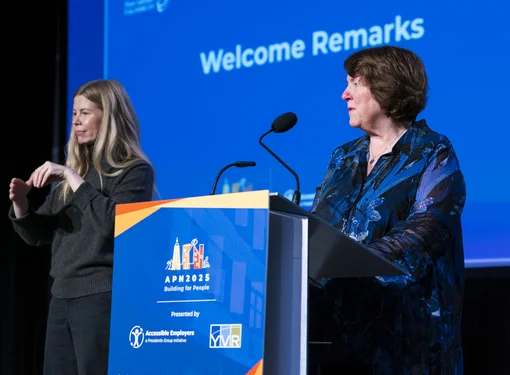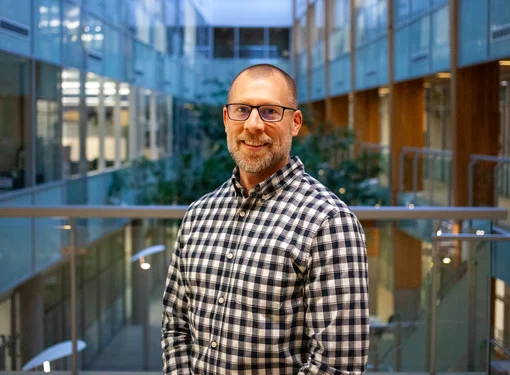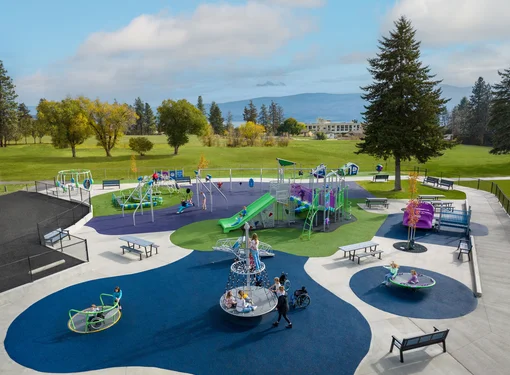Accessible Living Blossoms at Cypress Gardens
The site of 1582 Balmoral Avenue, located in the quiet town of Comox on the eastern shores of Vancouver Island, British Columbia, has witnessed quite a transformation.
Formally on the lot stood a modest, one-storey, 16-unit, U-shaped townhouse building called d’Esterre Gardens, named for a man who moved to the area in the 1920s that started the town’s tourism industry. Recently demolished, it made way for Cypress Gardens. This modern, three-storey wood frame building opened its doors to the community earlier this year with 52 affordable and accessible units for people aged 60 and over and those with disabilities of all ages.
Under the guidance of Rick Hansen Foundation Accessibility Certification™ (RHFAC) Professional Ramesh Lad, Cypress Gardens has not only revitalized the landscape of affordable rental housing in the region but has set a new standard for inclusive and accessible housing, receiving an RHFAC Gold for doing so.
Cypress Gardens, owned and operated by the Comox Valley Affordable Housing Society, was thoughtfully designed to address the diverse needs of people with disabilities affecting their mobility, hearing, and vision. Twelve units are wheelchair accessible, while the remaining are adaptable, allowing modifications to meet the evolving needs of residents. This approach exemplifies the foresight urgently needed in the housing industry, particularly given that 1 in 4 Canadians has a disability – a figure that continues to rise in tandem with our aging population.
Accessibility is a Step-by-Step Process
Ensuring Cypress Gardens was built with accessibility in mind was a comprehensive process. Reflecting the meaning of Ramesh’s consulting company’s name, this was achieved Step by Step.
Ramesh was contacted during the initial stages of the project to ensure some of the ground units were accessible. This involvement expanded to include an assessment of the grounds. By the time Cypress Gardens reached 70 percent completion of construction, it was clear that the project was on the right track to achieve meaningful accessibility and could reach RHFAC Gold. RHFAC measures the level of meaningful access of the built environment based on the user experience of people with varying disabilities affecting their mobility, vision, and hearing. Buildings that achieve RHF Accessibility Certified status score at least 60% on the RHFAC Rating Survey, while Gold ratings are awarded to those scoring 80% and higher.
Ramesh worked with the project architect to ensure that every aspect of Cypress Gardens met rigorous accessibility standards. From advocating for wider doorways and lower countertops to strategically placing support beams for future ceiling lifts, Lad left no stone unturned in his quest for inclusivity. Even during one of his inspections, Ramesh noticed support beams hadn’t been added to the first-floor accessible rooms, which is a necessity for lifts. He explained to the builder that adding them now would be far less expensive than retrofitting them later. Notably, the architect Ramesh worked with on the project was so influenced by Ramesh’s expertise that he decided to take RHFAC Training himself.
“And I think that’s the advantage to having an RHFAC Professional on the ground level,” Ramesh said. “I think that, initially, some people see it as not necessary because building code is being followed. But having somebody on the ground to explain why adding something like an extra beam for a hoist will make a big difference is so valuable. It is so important to realize that, especially in a seniors’ residential building, you can’t predict what is going to happen with your tenants. Things can change overnight for a resident.”
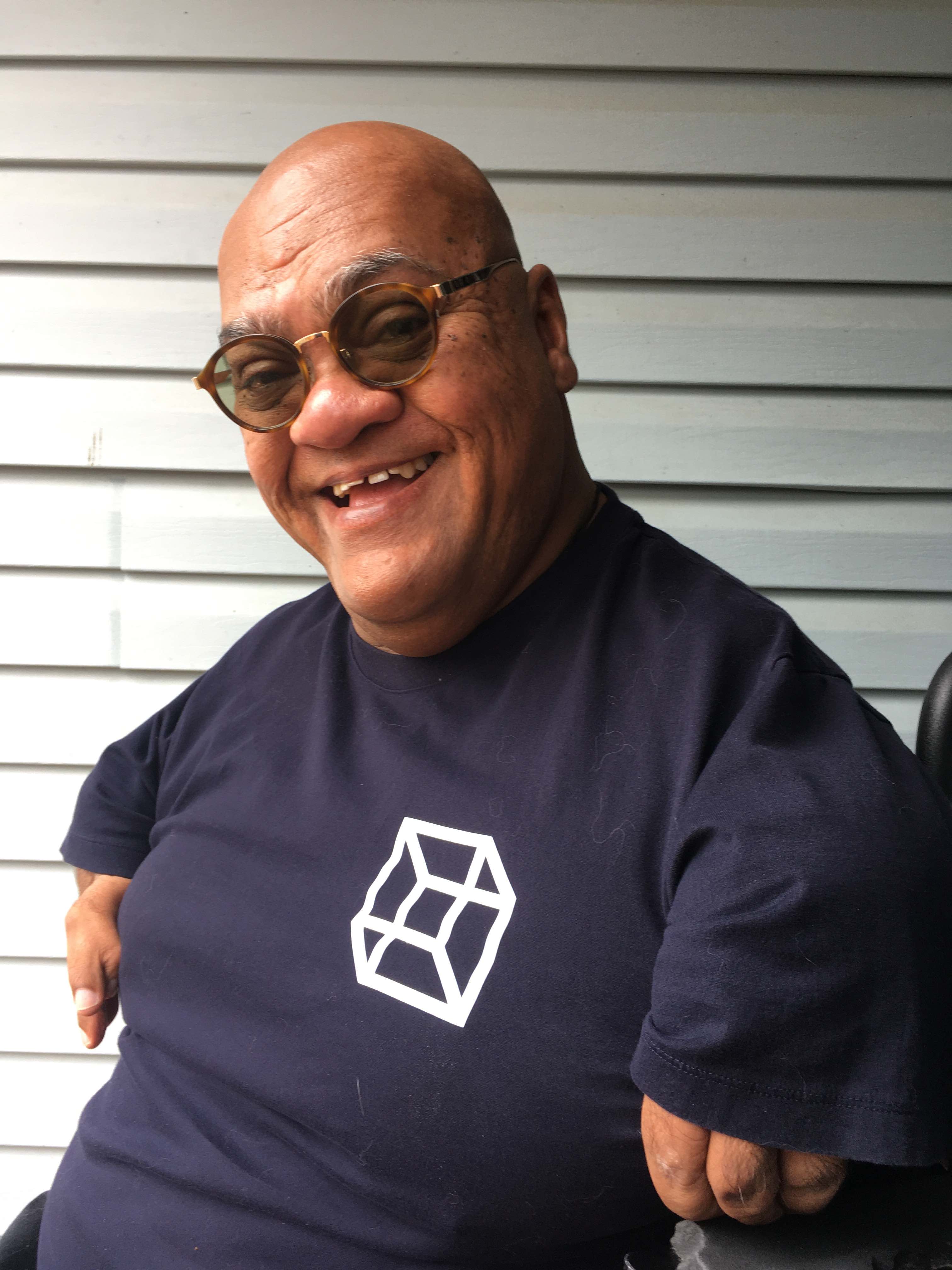
Cypress Gardens features a sheltered parking bay for scooters, wheelchairs, and charging stations. The building also has a large community room, an on-site office, and laundry facilities on each floor. Its grounds are also well-designed, with a path that can be used as an exercise circuit. The site is not off the beaten track, as it’s close to downtown Comox’s shopping district.
Meaningful Access for All
The impact of Step by Step Accessibility Consulting’s work extends beyond Cypress Gardens. Ramesh collaborates with various businesses and organizations in other areas of Vancouver Island and the Lower Mainland to make their spaces more inclusive. Whether advising on the redevelopment of historic theatres or consulting on new student residences at North Island College, Ramesh’s expertise continues to shape communities for the better.
His journey into accessibility consulting was born out of personal experience and a passion for ensuring that everyone can navigate their surroundings with dignity and independence, regardless of ability. Consulting came as a second career; after moving to Canada from England in 2001 and spending 16 years as a youth-at-risk counsellor, Ramesh took a year off to enjoy Comox Valley with his wife, Julie. This is when an opportunity to take RHFAC Training caught his interest.
“As somebody who uses a wheelchair and requires various accessibility needs, I thought this course would be ideal,” Ramesh said. “I’ve always been able to improvise and look at things differently to keep my independence. Now, I am actively helping show that there are so many little things one can do now that will make a difference to a large number of people in the future.”
One of the many steps in convincing builders and architects to consider accessibility in the planning stage is communicating the minimal added cost. According to an RHFAC Cost Comparison Feasibility Study conducted in partnership with the architecture and design firm hcma, on average, there is only a one percent construction cost increase to build to RHFAC Gold.
“I think the private sector has a long way to go, and I also think that there’s a misconception among a lot of people within that sector that it comes down to cost,” Ramesh said. “But they don’t realize there are so many simple things they can do to improve accessibility that benefit everyone and that it’s a journey. That was one of the reasons I called my business Step By Step. Because it is about making continuous progress, one step at a time, and understanding that accessibility is ongoing, not a one-time effort.”
